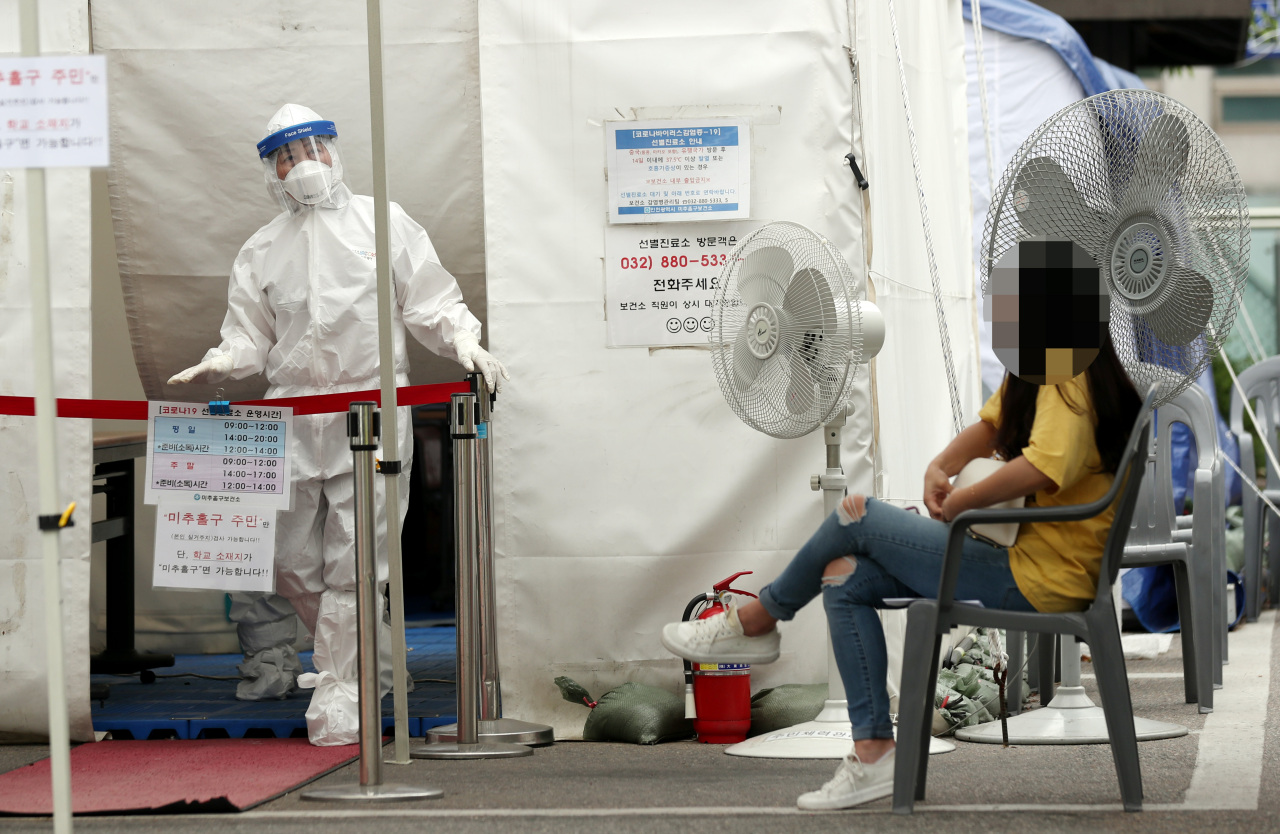Small religious gatherings spur virus concerns
KCDC’s promotion to an agency will enable better response in public health crisis, says KCDC chief
By Kim Bo-gyungPublished : June 4, 2020 - 16:43

Coronavirus spreading via small-group religious gatherings in the crowded capital region is the biggest source of concern in South Korea’s fight against the contagion, health officials said Thursday.
Seoul and surrounding areas have been on high alert due to sporadic infection clusters popping up following outbreaks seen in the Seoul nightlife district of Itaewon and a large logistics center in Bucheon, Gyeonggi Province.
“COVID-19 spreads in closed, crowded and concentrated facilities. It is recommended that those in the capital region postpone face-to-face meetings if possible,” said Jeong Eun-kyung, director-general of the Korea Centers for Disease Control and Prevention.
“Religious gatherings are also advised to cancel or switch to non-contact methods to avoid the risk of spreading the virus through air droplets.”
In the past two weeks, mass infections in the community accounted for 71.8 percent of new cases, Jeong said.
The capital region made up 96.2 percent of infection clusters, while 73.3 percent of the new cases under epidemiological surveys took place in or around Seoul.
Health authorities have so far identified 66 infections in connection with small groups involving 30 churches in the capital area, according to the KCDC.
Half of them, or 33 patients, had contracted the virus from s all group participants.
“In case of the Bucheon logistics center, we were able to curb the virus by focusing on those who had been in an out of a particular space. But we can’t do that for religious groups, which makes it difficult for us to respond (to the virus spread),” Yoon Tae-ho, a senior Health Ministry official, said during a morning briefing on the virus in Sejong.
Yoon added that those who had taken part in the group sessions conducted their daily activities in different places, complicating epidemiological surveys.
South Korea confirmed 39 new novel coronavirus patients on Thursday morning, most of which were linked to religious small group meetings in greater Seoul, according to the KCDC.
Of the new cases, 36 patients came from Seoul and surrounding areas -- 15 in Gyeonggi Province, 14 in Seoul and 7 in Incheon. North Gyeongsang Province reported one, and two were confirmed at airport checkpoints, according to the KCDC.
The accumulated number of virus patients here came to 11,629 as of midnight Wednesday, while the death toll stayed flat at 273 for the second day in a row, it added.
Addressing controversy stirred over the government’s plan to elevate the KCDC as an independent administrative body, Jeong said the move will enable it to focus on infectious disease prevention.
“My understanding of the move is for us to enhance our work with expertise and independence when it comes to responding to crisis, infectious diseases and public health crisis,” Jeong said.
“If we are spun off as an agency, we will have a separate budget, human resources and organization, ultimately allowing us to carry out more independent and professional tasks.”
The promotion was expected to downsize the agency to 746 people from the current 907, with a smaller budget of 668.9 billion won compared with the current 817.1 billion.
The plan, however, has sparked dispute among health experts, as it puts the Korea National Institute of Health, an essential institute in the country’s infectious disease research, under the direct control of the Health Ministry.
Meanwhile, 10,499 people had been declared virus-free and then released from isolation Wednesday, up 32 from the previous day, according to the KCDC.
A total 17,006 people were tested for the virus, pushing the accumulated number of test takers tallied at 973,858 people.
Of the test takers, 934,030 have tested negative and 28,199 were waiting for results, the KCDC said.
By Kim Bo-gyung (lisakim425@heraldcorp.com)









![[Kim Seong-kon] Democracy and the future of South Korea](http://res.heraldm.com/phpwas/restmb_idxmake.php?idx=644&simg=/content/image/2024/04/16/20240416050802_0.jpg&u=)







![[KH Explains] Hyundai's full hybrid edge to pay off amid slow transition to pure EVs](http://res.heraldm.com/phpwas/restmb_idxmake.php?idx=652&simg=/content/image/2024/04/18/20240418050645_0.jpg&u=20240418181020)

![[Today’s K-pop] Zico drops snippet of collaboration with Jennie](http://res.heraldm.com/phpwas/restmb_idxmake.php?idx=642&simg=/content/image/2024/04/18/20240418050702_0.jpg&u=)